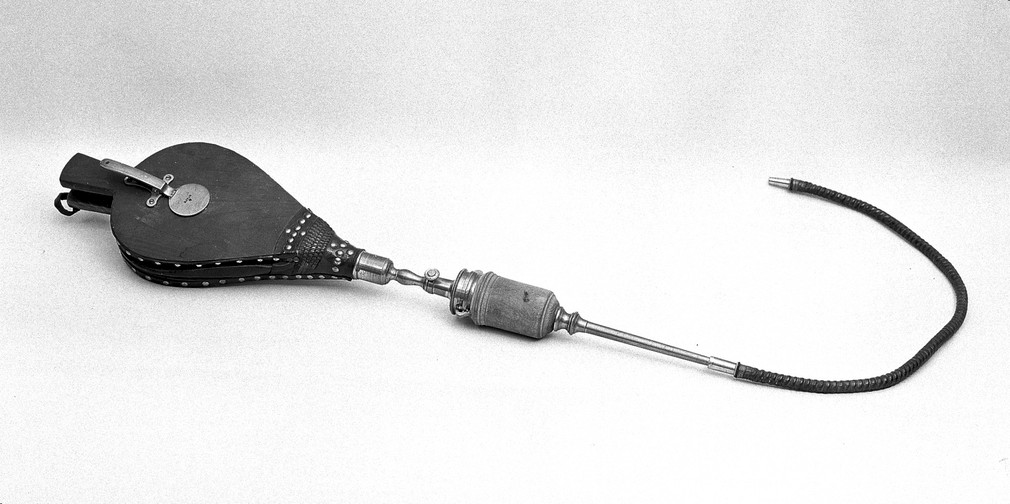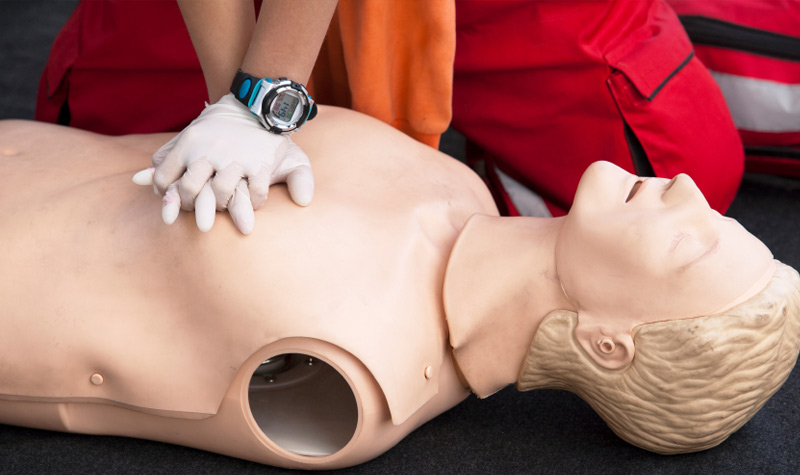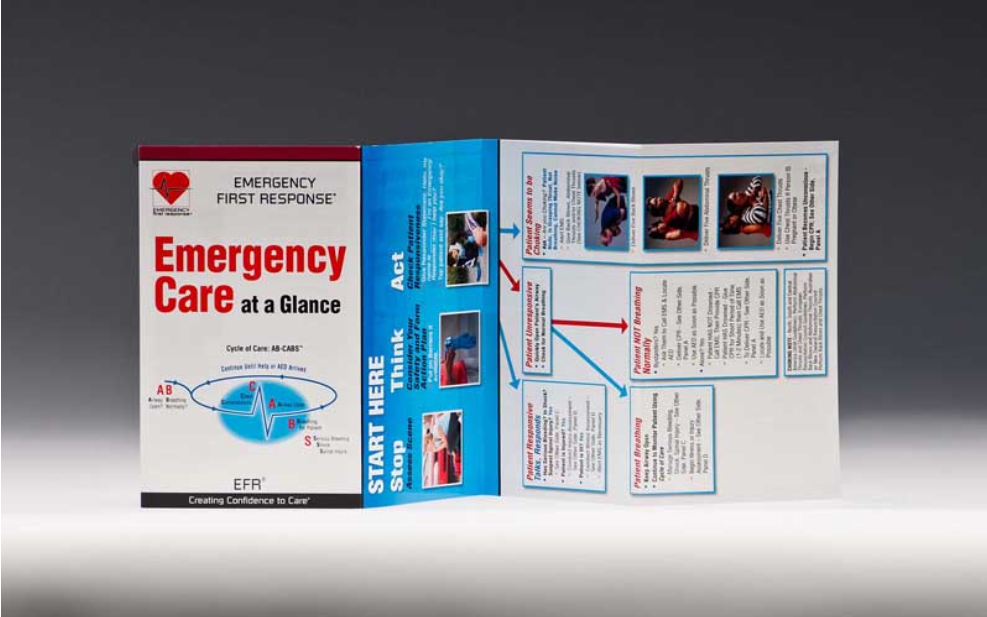Ever wondered how the lifesaving procedure we call “CPR” came to be? Cardiopulmonary resuscitation (CPR) may seem like it’s been around for ages, but the technique wasn’t finalised until 1960. Even today, medical experts implement changes to improve CPR’s effectiveness; the most recent change occurred in 2015.
CPR techniques throughout history
The major aspects of CPR, chest compressions and mouth-to-mouth ventilations, have been used separately throughout history.
- Doctors and midwives used mouth-to-mouth ventilations to help unresponsive newborns take their first breaths.
- In Japan, jujitsu students learned how to revive an unconscious person using a form of chest compressions delivered from behind.

Royal Humane Society Resuscitation apparatus. Credit: Wellcome Collection.
The first documented use of rescue ventilations involved a set of blacksmith’s bellows. Paracelsus, a German-Swiss physician, introduced air (and smoke) into a victim’s mouth using the bellows. The procedure worked well enough that “the bellows method” became standard procedure for a few centuries. Unfortunately, not many people carried bellows with them, and medical professionals did not yet understand the importance of tilting the head back to open the victim’s airway.
By the mid-1700s, medical practitioners in Scotland and France used mouth-to-mouth rescue breaths to revive victims of suffocation and drowning (respectively). In Amsterdam, The Society for the Recovery of Drowned Persons recommended mouth-to-mouth breathing and applying manual pressure to the abdomen to resuscitate someone. Other recommended methods included tickling the victim’s throat and stimulating their orifices with tobacco smoke.
In the mid-1800s, two London physicians, Marshall Hall and Henry Silvester were on the doorstep of discovering chest compressions. Hall’s method involved rotating a patient back and forth from their back to their side, while Silvester’s chest-pressure arm-lift method went a step further. According to Encyclopaedia Britannica:
In the Silvester method, the victim was placed faceup, and the shoulders were elevated to allow the head to drop backward. The rescuer kneeled at the victim’s head, facing him, grasped the victim’s wrists, and crossed them over the victim’s lower chest. The rescuer rocked forward, pressing on the victim’s chest, then backward, stretching the victim’s arms outward and upward. The cycle was repeated about 12 times per minute.
In the late 1800s, documented use of chest compressions occurred almost simultaneously on two different continents. An American doctor, George Crile, and a German surgeon Dr. Friedrich Maass, successfully used chest compressions to resuscitate human patients. Unfortunately, their techniques were not widely adopted until much later.
The Origins of Modern CPR
In the mid-20th century, doctors James Elam, Archer Gordon, James Jude, Peter Safar and Guy Knickerbocker Ph.D., conducted extensive research on resuscitation and external cardiac massage. In 1960, Knickerbocker, Jude and Safar made a landmark presentation to the Maryland Medical Society.
Their research proved the combination of chest compressions with mouth-to-mouth breathing was a simple yet effective lifesaving technique. They also promoted the importance of opening a patient’s airway. Their new procedure didn’t have a name, but it would save millions of lives.
The doctors embarked on a world tour and developed a training mannequin known as Resusci Anne and other teaching tools. Gordon, along with film producer David Adams, created a 27-minute training film called The Pulse of Life. The film was viewed by millions and included a simple mnemonic “ABC” (airway, breathing, circulation) to help students remember the steps of CPR.*
* The sequence we use today is CAB. The change occurred after research revealed oxygen reserves were sufficient to maintain blood oxygen levels; the new sequence prioritises compressions.
By the 1970s, organisations around the world launched layperson CPR training. In Seattle, Washington, USA, emergency dispatchers started explaining the steps of CPR over the phone, and other cities soon trained their staff to do the same.
In 1992, the International Committee on Resuscitation (ILCOR) was founded to collect, review and share scientific data on resuscitation and produce guidelines on resuscitation techniques. In the 2000s, the international committee announced a new recommendation: hands-only CPR (no mouth to mouth) for non-drowning victims after research revealed chest compressions alone are nearly as effective as chest compressions plus rescue breathing – when administered by a layperson.
Emergency First Response® (EFR) uses the latest research and instructional design for our CPR training classes. This means our CPR instructions help students gain the confidence to care as quickly and effectively as possible, regardless of their learning style.
EFR courses are accredited by the American Council on Exercise (ACE), Australia Council for Teaching Swimming and Water Safety (AUSTSWIM), Health and Safety Executive (Great Britain and Northern Ireland), the United States Coast Guard (USCG) and others. Learn more about the CPR and AED training courses we offer, or find a CPR instructor near you.




